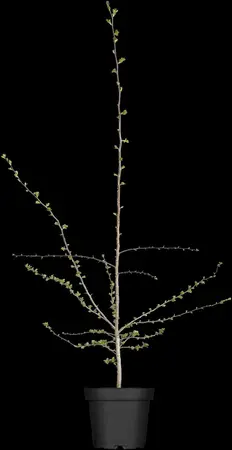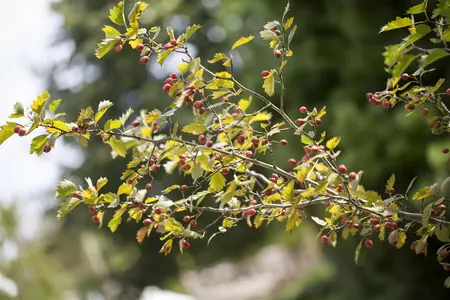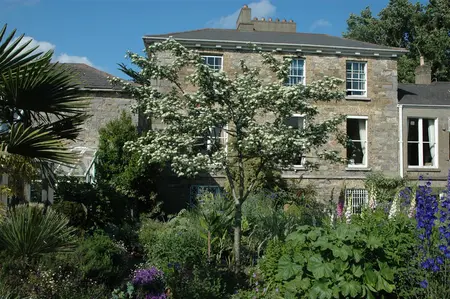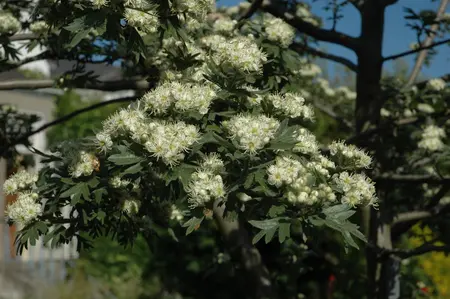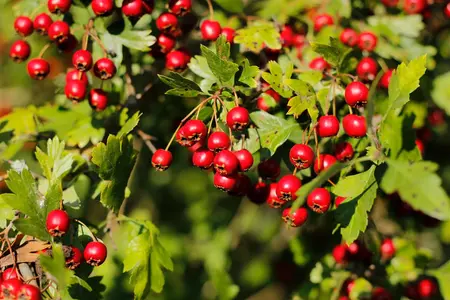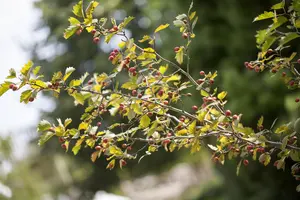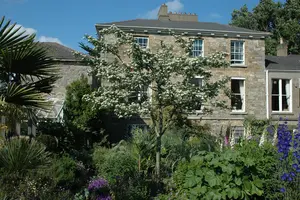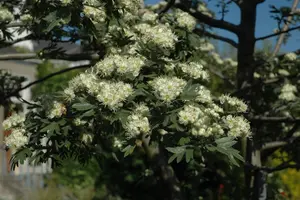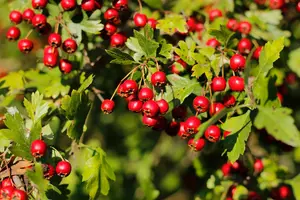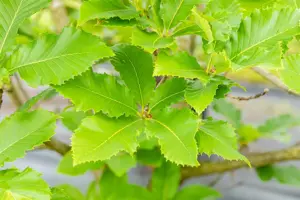Crataegus monogyna - 30-40 CM P9
Crataegus monogyna - 30-40 CM P9
Description
The Common hawthorn (Crataegus monogyna) is an upright, picturesque large shrub with decorative, dark red, round fruits. It produces white flowers arranged in panicles from May to June. The Common hawthorn also has cut, dark green leaves. In a sunny to semi-shady location with calcareous, nutrient-rich soil, it usually reaches a height of around 6 metres and is around 5 metres wide.
Synonym
Synonyms (botanical): Crataegus oxyacantha var. paulii.
Bulletpoints
* Fruiting ornament
* picturesque large shrub
* olive-green shoots
* the blossoms are heavily favoured by bees, bumblebees and hoverflies
* attractive orange-yellow autumn colouring
* tolerates pruning
* heat-tolerant, drought-resistant, resistant to urban climates, wind-resistant, cannot be built over
leaves
The deciduous leaves of the Common hawthorn are dark green, cut, alternate. Common hawthorn is bright orange-yellow in autumn.
Bark
Grey-green, flaking, scale-like bark makes this plant an eye-catcher in any garden.
Spread
Europe to West Asia.
Frost hardiness
The Common hawthorn has good frost hardiness.
Growth
Upright, picturesque.
Water
The plant has a medium water requirement.
Pruning
This plant is tolerant of pruning.
Location
Preferred location in a sunny to semi-shady position.
Soil
Normal soil.
Planting time
Container plants can be planted all year round, except when the soil is frozen and in summer heat (over 30°C).
Care
A slow-release fertiliser can be used in spring. This releases the nutrients slowly and continuously so that the plant is evenly supplied over a longer period of time.
Flower
The white flowers of Common hawthorn appear in panicles from May to June.
Fruit
The dark red, round drupes of Crataegus monogyna are particularly decorative. These appear from September.
Use
Screen, solitary, park, homeopathy, hedge (pruning), topiary, bee pasture, bird food plant
Shoots
The shoots of Crataegus monogyna are spiny, olive green.
Root
Crataegus monogyna is a deep-rooting plant and, depending on the soil, forms extensive branching roots.
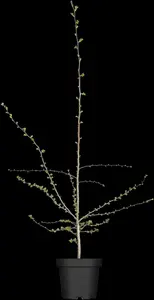
- Article number20
-
EAN codeCRMONOGY-2030040P9
- Latin nameCrataegus monogyna
- catalogLandscape shop

